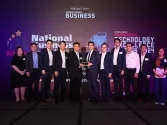Rumored legislation could block foreign manufacturers from entering Japan
By Edward Cahill After Japan announced a generous feed-in-tariff (FIT), Japan has become one of the hottest new PV markets in the world. Like all significant PV markets where there is also domestic manufacturing, the issue of protecting that fragile manufacturing base in a hostile solar market is bound to come up.
The U.S. and Europe have to take on competing countries head-on by proposing – or implementing, in the U.S. – import tariffs on Chinese cells and/or modules and China is retaliating. Rumors from manufacturers in Taiwan suggest that Japan will announce more stringent efficiency standards on imported modules: reportedly increasing minimum monocrystalline (c-Si) module efficiencies to 18.2%, and multicrystalline (mc-Si) to 17.4%.
Other examples of indirectly incentivizing domestic content are present – for example, wind projects in Brazil can only access low-cost financing from state banks if they contain 60% domestic content.
These measures are justified from a non-protectionist viewpoint: land and rooftop space are valuable for Japan, so PV installations should maximize power output per square meter, meaning more efficient modules have extra value. While this is clearly how the Japanese government would justify this action, this would also protect domestic manufacturers from competition with low-cost modules from China.
More efficient modules require high-efficiency technologies such as back contact modules, selective emitter cells, passivated-emitter rear locally diffused (PERL) cells, and heterojunction with intrinsic thin layer (HIT) cells.
These technologies require expensive processes, equipment, and materials, and are typically sold for a premium, which drives the price per watt up from prices as low as $0.70/W for standard (i.e. low-efficiency) mc-Si modules. Higher prices from imported high-efficiency modules mean lower price pressure on domestic suppliers.
On top of that, high-efficiency technologies from most manufacturers in Taiwan, China, and elsewhere do not top 18% efficiency. Only SunPower's interdigitated back contact, Canadian Solar's new metal-wrap-through (MWT), and Silevo's modified HIT modules are products currently on the market that can satisfy this potential requirement from outside the Japanese market.
Suntech and Yingli both have cells over 20% efficient, but modules lag between 15% and 17% efficient; as these companies refine these technologies, they may be contenders as well.
Still, foreign companies that could potentially sell modules into a growing Japanese market are limited and prices for high-efficiency modules will be significantly higher than average module prices today.
As a result, Japanese manufacturers – such as Kyocera, Panasonic, Solar Frontier, Sharp, and Mitsubishi – could be free from the extreme price pressures evaporating profit margins and forcing companies out of the solar business, if Japan turns these rumors into reality.









![Cross Domain [Manu + SBR + ABF + ABR + FMCG + HBR + ]](https://cmg-qa.s3.ap-southeast-1.amazonaws.com/s3fs-public/styles/exclusive_featured_article/public/2025-01/earth-3537401_1920_4.jpg.webp?itok=WaRpTJwE)
![Cross Domain [SBR + ABR]](https://cmg-qa.s3.ap-southeast-1.amazonaws.com/s3fs-public/styles/exclusive_featured_article/public/2025-01/pexels-jahoo-867092-2_1.jpg.webp?itok=o7MUL1oO)









 Advertise
Advertise


